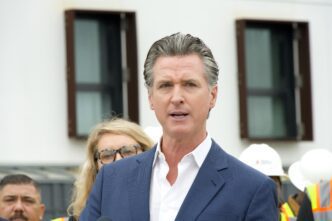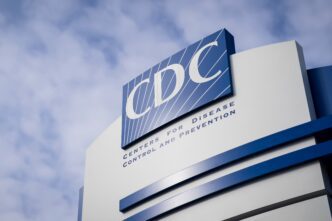The Vatican has commenced the most solemn period of Holy Week, with Pope Francis still in recovery and officially sidelined, while cardinals appointed to stand in for him presided over the major liturgical services leading up to Easter. Although Pope Francis, 88, was absent from the Holy Thursday Mass held in St. Peter’s Basilica, unconfirmed reports from Italian media suggested that he might visit Rome’s central prison later in the day, continuing a tradition of commemorating Christ’s Last Supper before his crucifixion.
The Vatican did not confirm these reports, noting that any such visit would be private and contingent on the Argentine pope’s condition. However, it seemed plausible given Francis’s emphasis on ministry to prisoners, especially during the Holy Year 2025, which began and will end with special papal events for inmates. Having overcome a life-threatening bout of bilateral pneumonia this winter, Pope Francis is expected to make some appearances in the coming days. He made a surprise appearance at the end of Palm Sunday Mass last weekend and has recently made some unannounced visits, including one where he was not wearing his white papal cassock, to pray at St. Peter’s Basilica and the Basilica of St. Mary Major across the city.
All indications suggest that he is gradually resuming some of his usual activities following a five-week hospital stay. In recent outings, he has been seen without nasal tubes for supplemental oxygen, and Vatican sources indicate he is increasingly less reliant on therapy. On Wednesday, the pope held his first formal group audience since returning to the Vatican on March 23, meeting with medical staff from Gemelli Hospital who cared for him during his 38-day stay. In a Vatican audience hall, Francis thanked the more than 70 doctors, nurses, and administrators, asking them to continue praying for him. “Thank you for everything you did,” he said, his voice still hoarse but seemingly stronger as he continues respiratory and physical therapy.
The pope expressed special gratitude to Elena Beccalli, rector of the Catholic University of the Sacred Heart affiliated with Gemelli, praising her strong leadership. “When women lead, things go well,” he remarked in his longest public statements since his hospitalization. Pope Francis has delegated the demanding Holy Week liturgical celebrations to selected cardinals, though the Vatican noted that he composed the meditations for the Via Crucis procession on Friday night at the Colosseum in Rome. Thursday’s Mass, during which oils used in liturgical rituals throughout the year are blessed, was officiated by Cardinal Domenico Calcagno, former head of the Vatican’s patrimony office. The solemn commemoration of Christ’s crucifixion on Friday was assigned to Cardinal Claudio Gugerotti, who heads the Vatican office for Eastern-rite Catholics, while Easter Sunday was entrusted to Cardinal Angelo Comastri, the retired administrator of St. Peter’s.
It remains to be seen how Pope Francis will handle the traditional “Urbi et Orbi” (“to the city and the world” in Latin) Easter Sunday address and blessing. Typically, the pope delivers a sometimes lengthy speech on the state of the world from St. Peter’s Loggia, followed by a special blessing to the faithful in the square. In theory, someone else could read the speech while the pope imparts the blessing.
Pope Francis was admitted to Gemelli on February 14 with bronchitis that rapidly progressed to a life-threatening case of bilateral pneumonia. Discharged on March 23, doctors prescribed two months of convalescence in the Vatican with daily respiratory and physical therapy to improve his respiratory and vocal function. Over time, he is expected to resume his usual activities.
The Tangible Impact
The health of a prominent religious figure like Pope Francis holds substantial implications for the global Catholic community. His condition and ability to participate in Holy Week events are closely monitored by millions worldwide, affecting both spiritual practices and the morale of the faithful. As the pope gradually resumes some of his duties, it may serve as an encouraging sign of recovery and inspire hope among Catholics during this significant religious period.
Beyond the religious community, the Vatican’s reliance on cardinals to conduct major services underscores the importance of contingency planning within religious institutions. It highlights the need for adaptive leadership during times of unexpected challenges. The pope’s gradual recovery might also foster a broader discussion on the health and well-being of leaders, emphasizing the necessity of adequate healthcare and support systems for those in significant positions of responsibility.






